My conversation with Soft Linden (above) on Second Life yesterday ranged from open source as the future of SL, to parallel processing for the SL Client, and much more in between, e.g., becoming a Linden, designing the 3D experience (the stunning modernist work of 3D experience architect Scope Cleaver), and how furry avatars might be especially suited to inviting the kind of playful creative interactions that are helpful to collaboration.
Professional Development Opportunities in Second Life are Growing Fast
I have seen Soft attending the Intel Dev Zone meetings, so I asked her about Intel’s recent entry into Second Life. Soft noted how impressed she is with Intel’s approach to Second Life. She mentioned both Deevyde Maelstrom’s coding challenge (Deevyde in Second Life ) – the War Bot competition, and the work of Peretz Stine who has created Intel Software Network Zone. Peretz is both extending existing technical community efforts to Second Life (for a guided tour of some other Intel initiatives on Second Life see Web Strategy By Jeremiah ), and working on connecting the SL development community with the Intel Developer Community.
Intel are amazing. I *love* what they’ve done. I mean, the developer events are great and useful… the kinds of things you can get by watching a webcast… but then they hold these other insanely geeky events that are magnets for socializing. They had a robot war competition with people building and scripting custom ‘bots that would fight it out in an Intel arena… *tons* of people showed up to cheer on the ‘bots, but also to meet and greet, and start to know the other developers on SL.
Folks are saying Intel are crazy for holding an event like that, but in my mind it’s pure genius. Lots of good connections were made, and a lot of us started to develop a real affinity for Intel making that possible.

I really think Intel understands what we’re doing here. The robot wars made me want to get more involved with Intel myself, even.
Here is a picture also from Peretz Stine’s Flickr (a.k.a Paul F. Steinberg) of my friend Poinky Malaprop, of Xerox Innovation Island (a.k.a Jonas Karlsson Researcher for Xerox Corp.) preparing his pink bunny warrior bot for the coding challenge. Poinky told me, “It lost every battle – strategy of assuming that nobody would want to attack a cute bunny didn’t work…”
The Intel Developer community and the Second Life open source community
Intel Software Network Zone is the only Intel Sim dedicated to long-term technical discussion, and not tied to any particular promotion. They have already held several developer meetings (ZombieBob Zenovka, Kevin Pirkl -RL, on jQuery/Web 2.0 Mashup Services, JoeWolf Writer on Fortran and C++ Compilers, Nanook Taurog and Wheaton Shepherd on Science Fiction Computing; Boldly Going where no Parallel Programmer has Gone Before, Clay Breshears on strategies for Concurrent Programming), which provided residents with a wonderful opportunity to interact with Intel’s top developers.
I spoke to Peretz earlier and he described his excitement over the mix of people who are participating in this effort. “We’ve got a great selection of hard-core geeks and engineers and we’ve also got folks like Wilf and Nanook [Intel Principal Engineer Tim Mattson] interested in Second Life. These are the folks who will be defining our computing platform for the next decade.”
These pictures are from Peretz Stine’s Flickr stream. Top Intel engineers are being led through a Second Life training on scripting and object creation by Legendary SL Scripter, Francis Chung.
Wilf Pinfold, a former head of Intel Microprocessor Research Labs, and now in charge of New Business Initiatives is in the leather jacket. Peretz Stine’s Real Life manifestation Paul F. Steinberg is sitting at the back in a blue shirt.
Here’s Peretz Stine in the Zone.
Parallel Processing For The Second Life Client?
Soft is working from the LL side to connect the Intel Developer’s on Second Life up with the SL open source community:
Right now, I’m pushing to see if Intel might be interested in demonstrating some of their advanced developer tools against our open-sourced code. I’d think we could help raise visibility for their tools and their community efforts here, and our open source community would love love *love* some focus on the code, given as a presentation that invites their involvement and gives them ideas for new projects they could work on.
Intel have some very nice tools for evaluating code to find how to make it faster, more efficient. They also have some libraries and a compiler product we might be able to use in order to make Second Life take better advantage of newer processors, which can do many things in parallel… but only if the program is rewritten to take advantage of that parallelism, which is difficult work without good tools.
Since Intel have some of the tools we need already, it would be great to help Intel get more developers trained with their tools, some of whom might help to prepare the SL code to better utilize parallel processing.
There’s also a ton of work to do on the viewer, the part we’ve already open-sourced. There’s some work the viewer does to take advantage of multiple cores, but it could do much much more! Speeding up the viewer with optimization and parallelism would be an important part of getting lots more residents in a region at once, still able to dress with attachments and the likes, and to get even more realistic rendering in place.
Open Source Projects In Second Life and Open Sourcing Second Life
It’s worth noting too, that this is just one example of something we’d love to foster. I hope other companies are interested in reaching out to open source developers through our project. As far as open source projects go, Second Life is unique in quite a few ways…
For example, there aren’t many graphics-intensive open source projects, ones that interface quite so directly with the mass public. I can’t even think of another project that should be so exciting for companies who deal in consumer desktops, and who want to find a way to push new open technologies and hardware platforms to the public.
What is Second Life’s relationship to OpenSim and libsecondlife?
OpenSim is a sort of doing a fresh public implementation of some of the stuff we haven’t opened yet while we’re finding the best way to open SL completely without security problems, or throwing away our current business model without having a new one in place yet.
I don’t know where OpenSim fits in in the long run. We *do* plan to release the sim source just as we have with the viewer. So it’s weird to have a major parallel effort in a world where the Firefox and the Apache of the 3D world context will already exist. It’s possible they’ll be great for those “kernel httpd” type applications, where you need a super-specialized server to handle unique tasks where a full implementation gets in the way.
Ya asked, but we don’t really have a relationship with OpenSim. I personally find their work kind of exciting. I’ve talked to one of the OpenSim developers about the possibility of working together if they come up with benchmarking tools for testing portions of the grid, so we can compare notes and see if there are things we can learn from their approach. I got a favorable response, but no activity so far. I hope we can move that forward. (Ya listening, Adam?

libsecondlife “is an effort directed at understanding how Second Life works from a technical perspective, and extending and integrating the metaverse with the rest of the web.” Re libsecondlife Soft said:
In the long run here, we really really want SL to be a platform. We make sure people understand the protocols we use, and we get the source out there because we anticipate this kind of project. I don’t think we’re silly enough to ever think that we’d become the only 3D world developer by trying to lock up the protocols. In other ‘net projects, it’s been handily and painfully proven by dummies in bigger companies that this doesn’t work!
So toward the end, of making SL a ubiquitous platform, we -want- this kind of project to exist. Different projects have different relationships with us, and with libsl, we have a pretty good rapport with some of the developers. We even experiment with some of their work for internal tools. We like having ‘em around.

Becoming A Linden
Soft Linden, like others at Linden Lab, invents her own role to a large extent. The goal she is choosing for herself is to try and grow the pool of open source contributors to Second Life. Soft gave me an interesting glimpse into the day to day boiler room work behind the technosocial revolution of Second Life.
I have seen Soft in a number of community settings on Second Life, Gwyneth Llewellyn’s and Extropia Da Silva’s weekly “Thinkers” group, Metaversed’s Geek Meet, and Intel Developer’s meetings. In all these encounters, I couldn’t help noticing that Soft has a special kind of people magic – inviting playful, open engagement with whatever task is an hand. There has been a lot of attention recently to the use virtual worlds for learning, e.g., Robert Bloomfield’s idea of one day gaining academic certification through playing games, and their role in developing a new generation business leaders, and see IBM’s Global Innovation Outlook 2.0, and Tony O’Driscol’s posts.
I think that Soft’s experience in game development shows in her interactions that invite the kind of team work and role play that experienced gamers are adept in. After talking with Soft you really feel inspired to spend the effort that Gwyn reports it takes to download and compile the SL Client. Soft explained to me a little bit about her choice of avatar too (see here for a great post on furry avatars on SL and where to find them).
I was kind of excited to hear that Luskwood had made a real business here, and how quickly they were refining and improving things, mastering such a niche market that meant so much to a tiny population! So I loved not only finding a neat-looking new me, but also getting to wear something that represented one of the things I loved so much about SL.

It’s been fun just how -few- weird reactions I get about it. And it’s fun that I bump into other important folks like Peretz Stine who went with furry avatars too. There’s this whole great geek culture surrounding the furry community that’s a significant subset of the best things in SL. Many think the furry avatars are silly, but they’re really starting to get used to realizing that the furry is -more- likely to be interesting to talk to, not -less-.
But, Soft is also savvy to the difference between Second Life and other MMOG from a developers perspective.
Something to remember when ya compare us to games – here, yer all creating the content. And you make amazing things! But with games, ya have a team that’s constantly trained in what’s efficient, safe, and fast in the engine. Here, y’all surprise us daily with weird things you tried to do to our engine. Multiply that by hundreds of thousands of builders to imagine the painful things we go scrambling to clean up.

But ya, I guess it’s that rampant creativity and the constant surprises that made me get out of games and come here. I wanna help make this work!
This picture is the presenter’s eye view at a Linden tech presentation (click to enlarge). “We hold our meetings in-world. It’s really surreal looking at the assembled crowd. Yer talking business while sitting between a robot and a dinosaur.”
Soft is a relative newcomer to SL and to Linden Lab. And, I was interested to hear her story of becoming a Linden. Soft mentioned that as LL reaches out further for developers there may be a time soon when working with Linden Lab is a totally virtual experience. “I work at home. I’m kinda on the leading edge of developers being hired and working remotely… the more we can make this work, the more hiring choices we have. There will probably be a whole lot more!”
Soft’s advice to anyone interested in becoming a Linden developer: “The best best thing you can do is grab the source code, get it building, and try tracking down a bug or two. Good patchers get interviews -really- easily, for jobs or contracts alike. We kinda have a dream that someday we’ve got so many open source developers that we never have to talk to a recruiter again. We just hire as many of the best people that we can afford so they can get paid to do a lot of what they’re already doing a little of for fun. :)” (here for Linden office hours)
All I know is I have seen friends change here in Second Life.
I asked Soft how she came to be a resident of Second Life first and a Linden shortly thereafter.
Well, it’s sort of a funny story. I first came here more than a year ago, but I only stayed around a couple days, then didn’t come back until much more recently….. The friends who introduced me to the place were just horsing around and making giant penises in the middle of people’s yards, making griefing particle spam toys and stuff… they’d just found another place to be a menace, which wasn’t my cuppa tea.
But, they continued to talk about it pretty steadily even when I wasn’t on, and so I got to looking in again half a year later, and a bunch of the guys who were being asses were suddenly making clothing, scripting for money, opening stores, or just getting all excited about one skill or another. Even some of my most nihilistic friends were starting to take things seriously for the first time in their lives.
So that made me really excited and curious about the place. I wish I’d seen more of some of the other work when I first visited, or I might have gotten what SL was about much sooner.
I dunno what it is exactly. All I know is I’ve seen friends change here. I start to realize that having so few barriers in the way of doing and creating whatever you want, and having so little barrier to getting projects to market, or to reproducing them for people who’ll be thankful to receive them… it can do a lot of good in changing a sorta defeated person’s outlook.
It’s not just for SL goods though! If we can make SL erase the relevance of distance, then we’ve taken one more arbitrary barrier out between people and what they love, or need to thrive, whether it’s work, art, or… did you know people put on plays and make movies here? You already know philosophers get together!
I love the fact that anyone can look good and dress for success, too. It makes those factors irrelevant. Instead of standing out by being pretty or wearing a suit well here, you stand out by being creative, inspirational, intelligent, and so on. It eliminates the superficial by making the superficial fun and free.

I have heard this story of changed lives on Second Life many, many times. The future role of virtual worlds in our lives is almost unimaginably vast at this time. But, I think that the fact that this future is built on a ground made up of millions of individuals finding new opportunities for creative, economic, social and personal development is a good omen for what is to come.
Creating the 3D Experience – meeting a virtual architect
Throughout our conversation I was aware of how tuned into the 3D experience Soft is. And, as I have decided to do a series of reports on Second Life 3D Experience Architects on Ugotrade, I mentioned my admiration for the work of 3D experience architect Scope Cleaver, and his stunning modernist builds. And, as it turns out, Soft is another of Scope’s many fans on SL (see Aleister Kronos for some great write-ups of Scope’s work – here is one on Scope’s Art Gallery for Princeton).
I’m a fan of Scope’s work too. I’ve seen the Camber house, its little brother, and I looked at his own home build as well.
I love his attention to detail! I ran across one of his builds in progress floating over water on Autodesk Island, I think it was for Clear Ink? Lots of purple! He’d gone so far as to set the material types on a lot of the incidental glass pieces and the likes, so if you bumped against them, you got a proper glass collision noise. Super cool! Little surprises like that imbue the place with a sensation of it being more real. Your mind just starts to sort of expect that that detail is everywhere, even if you only encountered one or two small examples.
Even things like the sounds the doors make on his buildings. They’ve got a sort of airtight seal noise and a little bit of echo that matches what you’d expect from the room. It’s not just some generic iconic door noise, but what you’d actually think you’d hear right in the place you’re in.
And he’s kind of a fun character, too. I’ve seen him at the Thinker meetings, and one or two other events. Love the big cigar!
I asked Scope if he had a picture of himself building and ever the mystery man, this is the one he sent me! His avatar is the small reflection center frame. Scope Cleaver’s business in Second Life, is what KZero calls a purely metabrand.
‘A Metabrand is a brand that is created to exist solely in a virtual space. It lives only on servers, is powered by electricity, experienced only on a computer screen and serves to provide a service, solution or product to avatars living in a metaverse. A Metabrand satisfies a demand that exists purely on a virtual basis.’
On Ugotrade I talk a lot about how linking the Real World and Virtual Worlds can contribute to a better planet. But Scope brings a different perspective on how the metaverse can be beneficial to the Real World. Scope keeps links to the Real World to the minimum. This is not so much about privacy but to keep his work *about* and *for* Second Life. In the rare cases he needs to sign a Real Life contract he uses a proxy.
Scope uses SL tools pretty much exclusively with the usual graphical programs. But, he doesn’t spend time trying to import CAD models or anything like that. He explained to me that he is a true believer in the metaverse and in the way that values can be created out of thin air here:
I can see a future where most, if not all of what we value is uniquely in the metaverse. Other than maybe sustaining what little we would have left to keep this metaverse going. The way in which I think this is benefical for the real world is the sense in which it would remove alot of the conflicts we have in RL. Because where you find conflicts, issues, tensions is often where values are – resources and the environment being an example of that. If nobody cared anymore to buy a SUV because they enjoy buying virtual houses instead…
I predict a shift in value in that sense, I just can’t tell how quickly it will happen, but it has started. To give you an example, I don’t need a car or transportation anymore, I work at home. There will come a time when it’s not going to make as much sense value wise to buy a $5000 diamond ring in RL.
And Scope is living his own vision. He has created his own succesful metabrand out of thin air with no starting investment and no angel investor, just vision and time. Scope mentioned that his Real Life clocks are even set to SL time now!
He has recently opened a new store and office, and joined forces with Maximum Minimum. Click on the image below to see a wonderful portfolio of his work, properly photographed, without my avatar loitering in the shot, as it is here!
I also visited Scope at work on his latest project, the Art Gallery for Princeton, where I had a very interesting talk (more for another post) with Persis Trilling who “mediates between Princeton Faculty members and technology.” She is responsible for Princeton’s entry into Second Life . “This is the next thing I see coming. I try to be a year or three ahead.”
Aleister Kronos has a wonderful quote from Persis Trilling on his blog:
Persis was full of praise for the way in which Mr. Cleaver has gone about fulfilling his brief: “If Chancellor Green is about Ruskin‘s seven lamps, Scope’s building has them in spades too. He is just using a different architectural vocabulary.The sense of craft; of expression of essential human qualities and the emotive use of light and space is a lot like the more modest drama of Chancellor Green.” She went on: “It’s a very nice build, and I think reflects well on the existing major buildings — each one perfectly modern in its day, in fact, forward-looking. I showed him a lot of spaces that I admired. He did not copy anyone but respected an element of each design. I told him what I liked about each — so a little Carlo Scarpa; a little Gehry; a little James Stirling.”
Some Other Really Great Things Happening In Second Life.
Thank you to Steve Nelson of Clear Ink for pointing me to this:
Second Life Virtual Orphanage and Child Sponsorship Program.
And, congratulations to the wonderful metaverse architects at Virtuool who have won the Les Halles renovation concept competition. Aleister Kronos first mentioned this competition on 3pointD. For more details see: http://reperes-secondlife.com/jardin_halle_concurrent.asp. He also mentioned on SLAmbling that he will post some pictures soon.
And, thanks Chris Carella (a.k.a. Satchmo Prototype). Chris’s post brought my attention to this very powerful video:
A Child’s War – a video made in Second Life by Global Kids

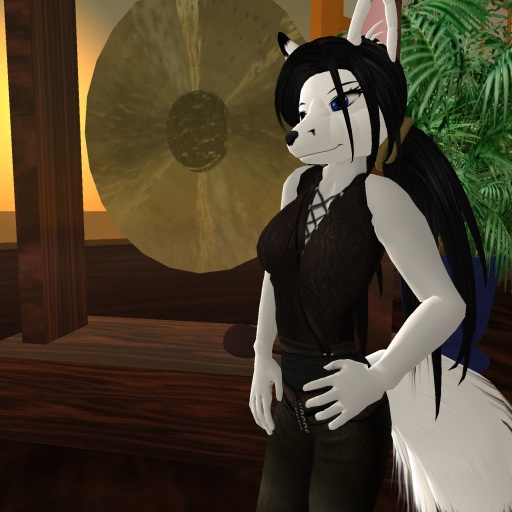
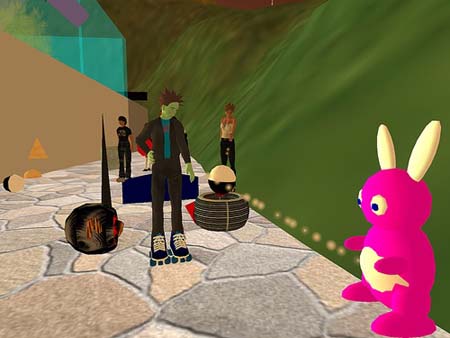
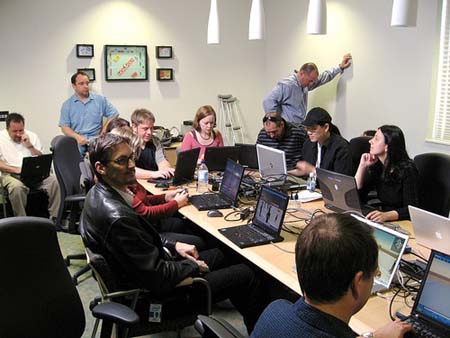
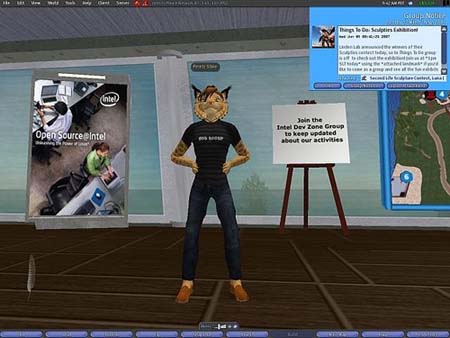

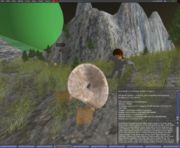
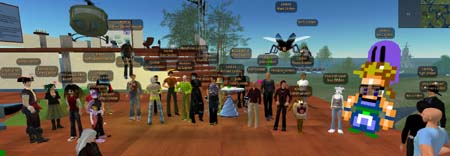
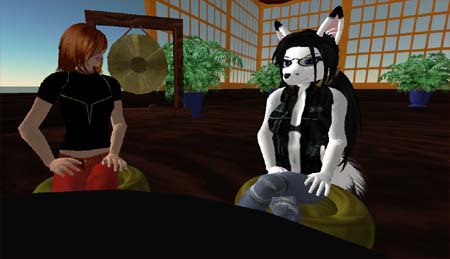
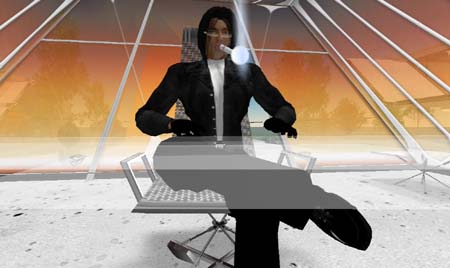
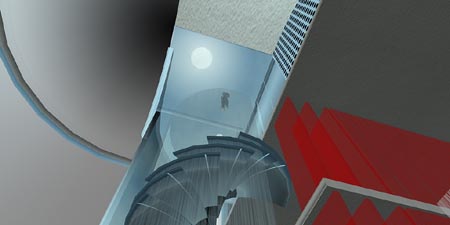
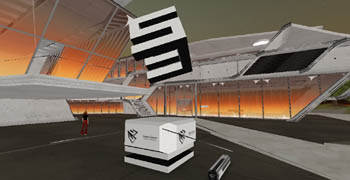
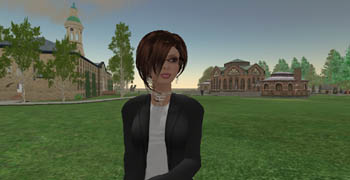

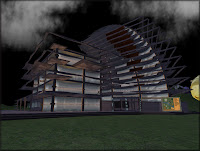
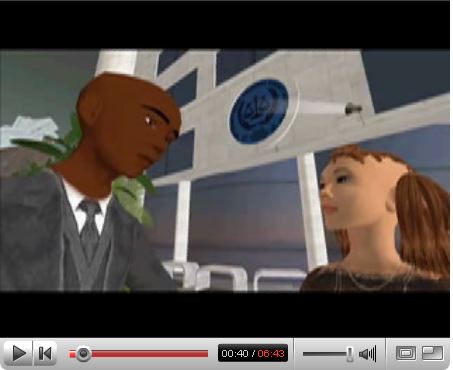
July 7th, 2007 at 12:26 pm
“Soft” wrote: “So it’s weird to have a major parallel effort in a world where the Firefox and the Apache of the 3D world context will already exist”
Equating the Second Life server software to the Apache web server is misleading because, press releases aside, it’s completely closed and developed behind a firewall. A closer analogy would be to compare Second Life’s server to Microsoft’s IIS and OpenSim would be Apache.
July 8th, 2007 at 3:40 pm
A delightful read, specially the thorough article on Soft Linden. I think this might be the longest and deepes analysis of why someone joined Linden Lab. It was very, very interesting.